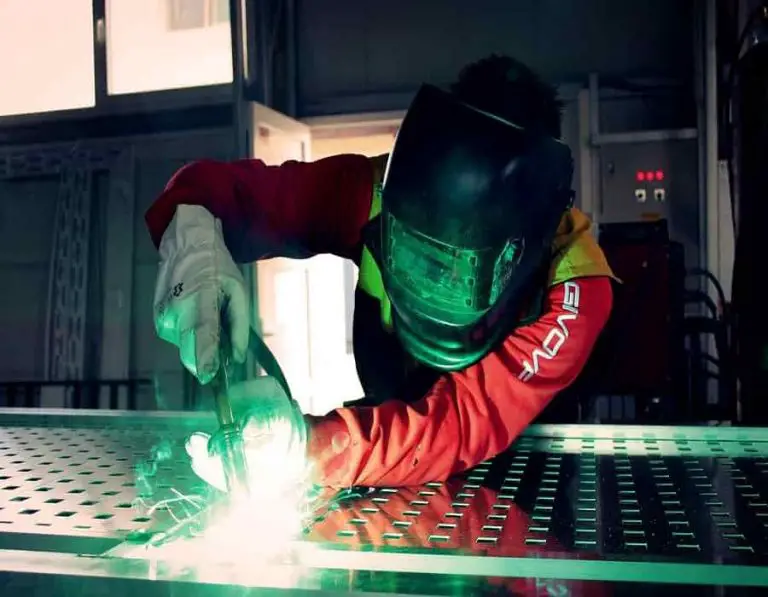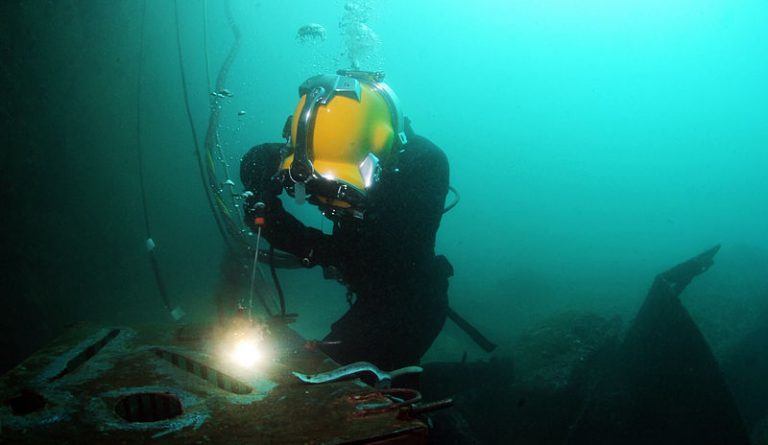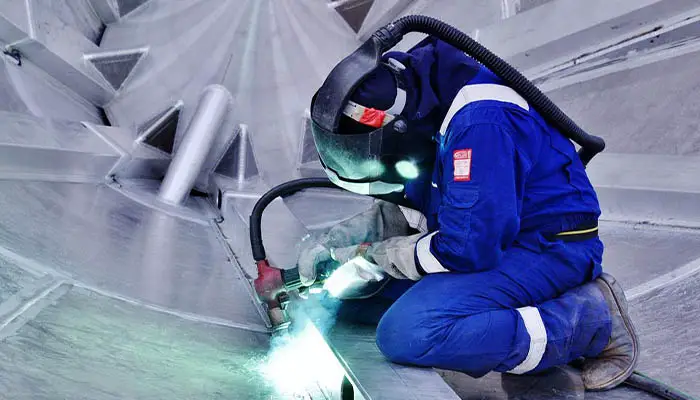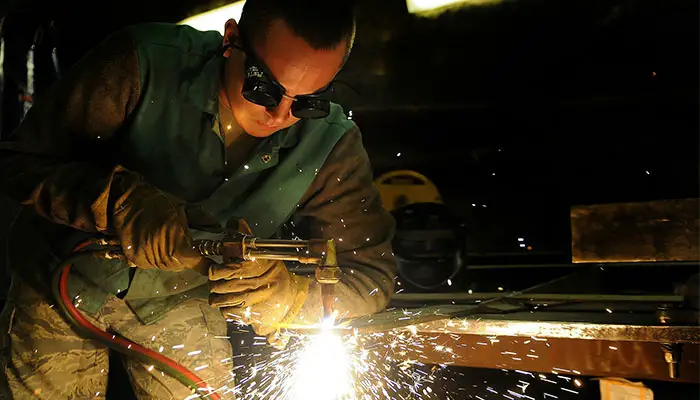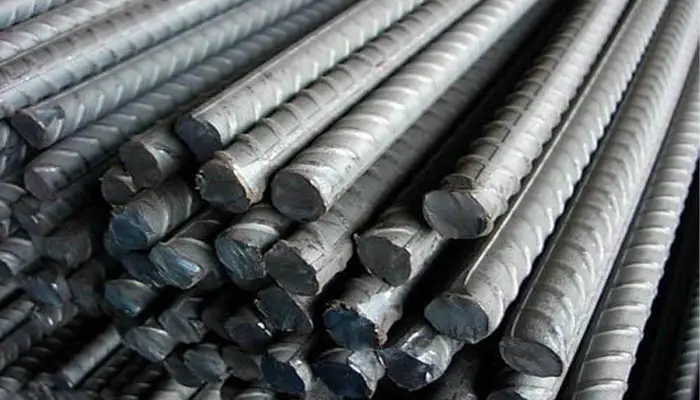How to Weld Aluminum with a Stick Welder?
Joining pieces of materials is an essential task for the construction and manufacturing industry. Welding helps to join metals/ thermoplastic by softening them and applying heat and pressure.
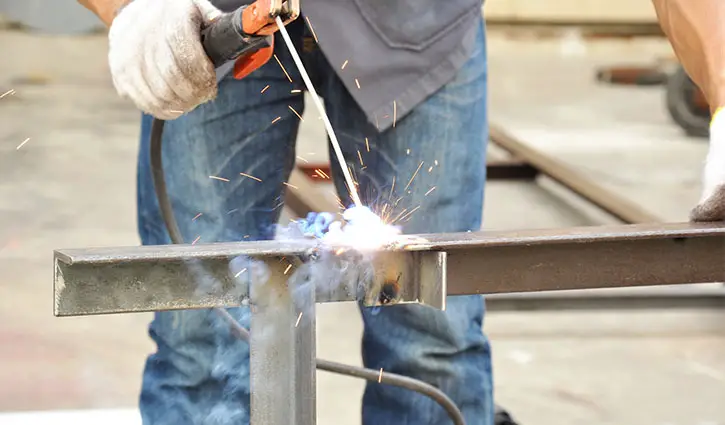
There are many welding processes and techniques; each of them works excellent on particular types of metals. Here, we are going to know about the joining process of aluminum pieces. The method of how to weld aluminum with a stick welder will be apparent to all of us.
Stick welding aluminum is not a popular category for welding pieces of aluminum. It seems expensive welding aluminum because 1lb of aluminum electrodes costs nearly 30 dollars. Besides, it takes to repair a few minutes but costs almost hundreds of bucks.
Here, we’ll discuss the necessary welding and the process of joining aluminum with a stick welder. The common questions about stick aluminum welding will be answered later. So, focused on us.
Table of Contents
What Is Stick Welding?
Before knowing the process of stick welding aluminum, it is essential to understand what is stick welding. It is a process of attaching metals by using an electrode and electric current Shielded metal arc welding, famous as a multi-function method for connecting different types of metal. Generally, an electrode is created with a solid metal stick, which is coated with metal powders and compounds. For making the compound rod on the outer layer, they come to a binding agent.
A welder can use both direct or alternating current while making an electric arc between the electrode and metal. The electrode leads the electric current to the arc and supplies filler metal for the joint. Here, you can easily understand that stick welding offers extensive application in the maintenance, repair, and construction industries. It suits aluminum besides welding steel and iron.
Read More: Can I Weld Aluminum With A MIG Welder In 2022?
Process of Stick Welding
Generally, a stick welding uses a flux-coated electrode to induce a weld. Electricity drives past through the coated electrode, producing arcs at the contact points with the base metal. At the time of electrode melting begins, the flux coating around it produces a cloud of gases. The gas defends the fused metal and averts it from oxidizing. During the cooling down of the metal, a gas settles on the pool of fused metal. You have to chip off the slag, which comes from the gas after completing the welding.
The main advantages of stick welding are the tools are easy to use. Besides, the equipment for the welding is inexpensive, and there is no need to buy external shielding gas that is completely money-saving. Moreover, you can use this method for numerous numbers of metals, and the electrodes are easy to change for a different method. Furthermore, stick welding works great rusted surfaces.
Now come to the limitations of stick welding. It offers very few limitations among them highly skilled operator is needed, and it needs frequent replacement of electrodes.
Welding Aluminum with a Stick Welder
Welding aluminum with a stick can be confusing. Often, you’ll hear about the idea of using an AC TIG welder or MIG welder along with a spool gun as well as an argon shielding gas for welding aluminum. Here the idea of how to weld aluminum with a stick welder ac and how to weld cast aluminum with a stick welder will be clear.
The AC TIG uses argon gas is most probably the slowest, cleanest, and most controllable method of thin welding sheets of aluminum. If you use DC TIG with helium gas instead of AC TIG with argon gas, it will work better for thick layers of aluminum. As the helium produces more heat and the hot arc is suitable for deep penetration on thick aluminum.
On the other hand, MIG seems faster than TIG, but MIG requires a filler metal to melt down the base metal, which seems more complicated. Besides, there’s no need to use a spool gun or push-pull gun for straight MIG cables.
Properties of Aluminum
Before knowing how to weld aluminum with a stick welder, it is essential to understand the properties of aluminum. Aluminum is a lightweight and soft metal that seems easily cast-able and weldable. Moreover, aluminum can be joined with other metals quickly by welding. It has excellent resistance to corrosion as well as offers excellent thermal and electrical conductivity. Furthermore, the meltdown point of the aluminum is a bit lower than 660 degrees Celsius and has high thermal conductivity.
Cleaning Before Welding
Aluminum can form a thin layer of aluminum oxide when it goes into contact with the oxygen in the air. This layer of aluminum oxide should have to remove before welding. This aluminum oxide needs a higher temperature than usual standard aluminum. That’s why before welding, ensure the layer of aluminum oxide has been cleaned.
Furthermore, for cleaning the aluminum with brushes, make sure the brushes are only used to clean weld aluminum. If you use the brushes that clean the other materials, it can leave traces on the aluminum and affect the quality. For preparing the aluminum for welding, scrap the thin layer with sandpaper.
Safety and Preparations
Before starting the Stick welding process, you have to ensure some protective clothing and preparations. In TIG welding, a lot of ultraviolet radiation is generated. For this reason, anyone may get burnt on the arms if they use short sleeves. That’s why try to wear protective clothing made of thick fabric and shirt made from 100% cotton. Also, make sure the pant has no scuffs, which may catch the molten material.
Furthermore, for welding, everyone should use heavy welding equipment such as thick gloves, a welding helmet as well as a respirator to protect us during welding. The respirator will guard you against radiation, intense light, fumes, chemical burns, electrical shocks, etc. Besides, the gloves will be resistant to fire and have insulation.
Always try to wear a helmet that has lenses that darken automatically during the welding process. The lens shade needs to be between ten to thirteen. Before starting the welding process, always try to check the cords and wires first and fix which have nicks and frays. Any rusted and dented tanks are no allowed there.
Read More: Best Welding Helmet Under $100 | Top 12 Reviews
Stick Welding Process
Step 1 –
The first thing that needs the stick welding on aluminum is the machine capable of DC (Direct Current) polarity that must be cable of putting out 200 amps. You cannot be able to weld with a 120-volt, 140- amp machine as there is no way this machine can able to melt aluminum. That’s why voltage and amperage are the keys to stick welding aluminum.
Step 2 –
Now set the current of the welding machine. The welding machine must be capable of no less than 200 amps to strongly weld aluminum materials. Establish the machine between 190 and 210 amps. It depends on the thickness of the welding materials. The stick welding aluminum is recommended for quarter-inch or thicker material as deep penetration occurs in most cases.
Step 3 –
Do not forget to watch the length of the arc. For stick welding aluminum, the arc length must be the same as the diameter of the aluminum rod. If the holding rod comes too close to the aluminum, the voltage will be decreased, and comprised penetration will occur. On the other hand, holding the rod far away raises the voltage but causes porosity in the weld and lots of spatter. You should keep a little bit of practice holding the arc at a steady distance from the work.
Step 4 –
For welding, keep the angle of the rod 15 degrees against the aluminum. The straight up and down rod cannot be able to produce a fresh arc, and the weld can be compromised. On the other hand, holding the rod at 25 degrees may cause poor penetration and feeble welding. Do not drag the rod in which one may do with a MIG wire feed setup.
Step 5 –
Try to develop weld a particular weld style. The straight bee-line produces a high weld in most of the time. Some people may like to make “C” traveling arcs with a welding rod that will produce a weld that resembles a stack of dimes. The zigzag technique is also equally well, and all these styles of welding depend on your choice and experience. What you have to do is just weld slowly to make sure an excellent penetration and good puddle. As the aluminum cools down and diffuses the heat quickly, it needs more amps. That’s why the rod has to move as slowly as possible during welding to keep the alloy heated.
Read More: Is Welding Hard To Learn? (Explained)
Important Things to Know
Learning how to weld aluminum with a lincoln stick welder and how to weld aluminum with a stick welder is rather straightforward when you’ll understand the behavior of the aluminum. As it is already known that aluminum is a good conductor of heat, and it dissipates heat easily, thus aluminum will need more heat to weld, unlike other materials. In this case, pre-heating can solve the cooling down problem of the aluminum during welding. Also, pre-heating allows aluminum to solidify easily.
Also, if you are welding on the layer of aluminum oxide, it can take three times a higher melting point than the original aluminum. Thus, this layer absorbs moisture and results in porosity troubling the strength of welds.
Final Notes
Finally, it can be said that how to weld aluminum with a stick welder is not a hard task to do. Before welding, one should collect and prepare all of the welding safety equipment. Do not forget to put on the safety glasses before any kind of welding. Also, do not forget to wear pure cotton and thick clothing. Welding on aluminum is not that hard task. You have to show your patience and weld as slowly as possible.
Read More: Why Is Underwater Welding Dangerous?

